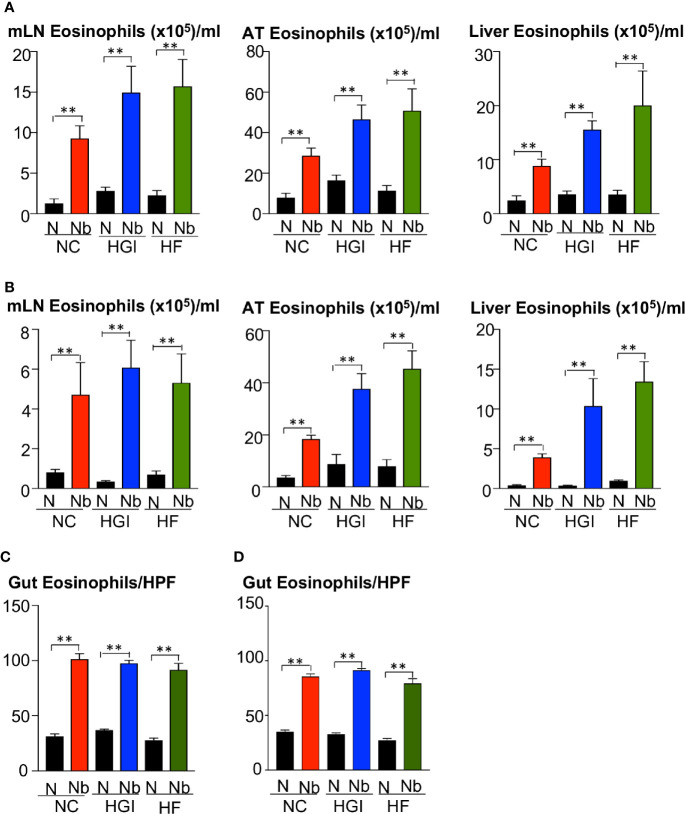Figure 4.
Increase in the frequency of eosinophils in the mesenteric lymph nodes (MLN), adipose tissue (AT), liver, and duodenum in mice fed on different diets and infected or not with Nippostrongylus brasiliensis. C57BL/6 mice were fed normal control (NC), high fat (HF), or high glycemic index (HGI) diet and infected once monthly with 500 N. brasiliensis infective larvae from 6 weeks of age [prophylactic, panel (A)] or 24 weeks of age [therapeutic, panel (B)]. Eosinophil frequency and total numbers in MLN, AT, and liver are shown. Eosinophil numbers per high power field (HPF) (magnification x40) in the gut are shown in panel (C) (prophylactic) and panel (D) (therapeutic). Statistical significance was determined with Student’s t test. Data are expressed as mean ± SEM and are representative of two experiments where n = 5/group. **p < 0.01.

